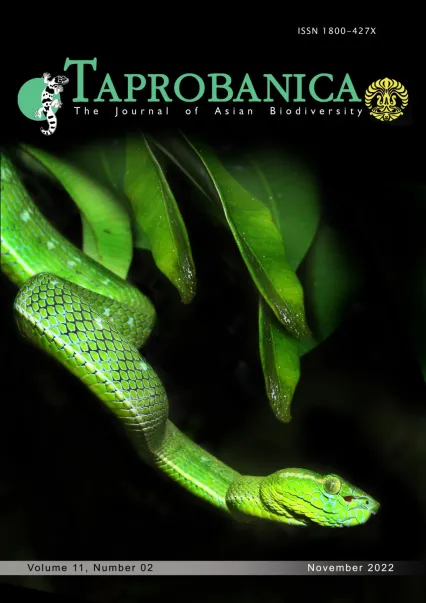

v11i2.293
Volume 11 | Number 2 | November 2022
Short Note
ISSN: 1800-427X (printed)
eISSN: 1800-427X (online)
DOI:10.47605/tapro.v11i2.293
Submitted date: 28 March 2022
Accepted date: 16 November 2022
Published date: 22 November 2022
Pp. 119–121.
Seaweed (macroalgae) diversity on the Dikwella coast, Southern Sri Lanka
M.L.I. De Silva*, M.S. Gunasinghe, P.H. Liyanagedara, M.A.S. Ranjula, H.M.S.M Herath, N. I. Bamunuarachchi & W.A.A.D.L Wickramasinghe
*Corresponding author. E-mail: ninelawlis1@gmail.com
Seaweeds are photosynthetic and macroscopic eukaryotic organisms found in marine and brackish water environments. They are one of the major primary producers in marine ecosystems. They are also important in maintaining coastal biodiversity by interacting with other organisms. In addition to their biological and ecological importance, seaweeds are economically significant. Data from the Food and Agriculture Organization (FAO) shows that a total of 35 million tonnes of seaweed were produced through cultivation in 2019 and 97% of this was from East Asia. China was ranked as the top producer. In contrast to all the positives, there are a few negative impacts of seaweeds; including biofouling, habitat invasion, and unwanted beach drift.
Section Editor: H.K.S de Zoysa
eISSN: 1800-427X (online)
DOI:10.47605/tapro.v11i2.293
Submitted date: 28 March 2022
Accepted date: 16 November 2022
Published date: 22 November 2022
Pp. 119–121.
Seaweed (macroalgae) diversity on the Dikwella coast, Southern Sri Lanka
M.L.I. De Silva*, M.S. Gunasinghe, P.H. Liyanagedara, M.A.S. Ranjula, H.M.S.M Herath, N. I. Bamunuarachchi & W.A.A.D.L Wickramasinghe
*Corresponding author. E-mail: ninelawlis1@gmail.com
Seaweeds are photosynthetic and macroscopic eukaryotic organisms found in marine and brackish water environments. They are one of the major primary producers in marine ecosystems. They are also important in maintaining coastal biodiversity by interacting with other organisms. In addition to their biological and ecological importance, seaweeds are economically significant. Data from the Food and Agriculture Organization (FAO) shows that a total of 35 million tonnes of seaweed were produced through cultivation in 2019 and 97% of this was from East Asia. China was ranked as the top producer. In contrast to all the positives, there are a few negative impacts of seaweeds; including biofouling, habitat invasion, and unwanted beach drift.
Section Editor: H.K.S de Zoysa
- List of Articles & Contents





